IT Room & Server Room Setup: Your 2024 Guide
Last Updated on January 18, 2024
A strong digital foundation empowers organizations to streamline operations, increase efficiency, and provide exceptional customer experiences. In short, an effective IT infrastructure is the key to unlocking a world of opportunities for businesses. The heart of this infrastructure lies in the server room (IT Room) – a powerhouse of data and operations.
This article will guide you through the critical steps of setting up a state-of-the-art small business server room, incorporating the latest technology trends and industry best practices. Whether you're updating an existing space or starting from scratch, this guide will serve as your roadmap to creating an efficient, modern IT room in 2024, ensuring your business stays ahead in the digital game.
Table of Contents
Starting with the Right Wiring
When setting up a server room, the journey to a robust and reliable network begins beneath the surface with the very lifelines of connectivity – the wiring.
The Foundation of Networking: Choosing the Right Ethernet Cabling
Current Office Spaces – Cat5e Ethernet Cabling:
- Widespread Usage: Most existing office spaces are equipped with Cat5e ethernet cabling, a testament to its reliability and sufficiency for standard business operations.
- Gigabit Network Support: This cabling supports Gigabit networks, catering to the current requirements of the majority of businesses.
Upgrades and New Installations – Opting for Cat6:
- When New Cabling is Needed: In scenarios where new data drops are required, or completely new cabling is to be run, Cat6 is the preferred choice.
- Superior Performance: Cat6 can handle 2.5Gbs and 10Gbs networks, making it a more robust and future-proof solution than Cat5e.
- Future-Proofing: With a lifespan of 5-7 years in relevancy and performance, Cat6 is a sound investment for any business looking to stay technologically ahead.
| Specification | CAT5e | CAT6 | CAT7 |
|---|---|---|---|
| Frequency | Up to 100 MHz | Up to 250 MHz | Up to 600 MHz |
| Max Speed | 1 Gbps | 10 Gbps (up to 55m) | 10 Gbps (up to 100m) |
| Max Bandwidth | 100 MHz | 250 MHz | 600 MHz |
| Shielding | Unshielded | Shielded or Unshielded | Shielded |
| Crosstalk | Better than CAT5 | Better than CAT5e | Superior to CAT6 |
| Performance | Standard for 100Base-T | Standard for 10GBASE-T | Enhanced for 10GBASE-T |
| Connector | RJ45 | RJ45 | GG45 or TERA |
| Length | Up to 100 meters | Up to 100 meters | Up to 100 meters |
Internet Connectivity: Fiber vs. Cable
1Gbs Fiber Line – The Game-Changer:
- AT&T Fiber Expansion in Miami: AT&T Fiber has significantly expanded its offerings in Miami, providing 1Gbs connections at around $170 – a highly competitive rate for fiber.
- Impact on Businesses: This expansion offers an incredible opportunity for Miami-based businesses to leverage high-speed, reliable internet connectivity at a reasonable cost.
Other Notable Providers:
- Comcast and Breezeline: These providers have also stepped up their game, offering amazing deals and enhanced services, reflecting Miami's overall improvement in internet options over the past few years.
Cable Line – The Viable Alternative:
- For Non-Fiber Areas: A high-speed cable line above 500mbs+ is a suitable alternative in locations where fiber isn't feasible.
- Balancing Needs and Availability: This option ensures businesses can still enjoy high-speed internet, even without fiber access.
Static IPs – Customized Connectivity:
- Personalized Network Setup: Static IPs allow for creating a customized network environment, which is essential for deploying your router/firewall systems.
- Reliability and Control: They provide a stable and controllable network, crucial for seamless business operations.
The Design Process: Utilizing Unifi Designer
Before diving into the physical setup of your server room, let's emphasize the critical importance of a well-thought-out design process. A meticulous design lays the groundwork for a successful and efficient server room installation.
Leveraging Unifi Designer for Optimal Planning
Starting with a Floor Plan:
- Initial Step: Begin by creating a detailed floor plan of your intended server room space.
- Upload to Unifi Designer: Utilize Unifi Designer, a user-friendly tool that seamlessly integrates your floor plan.
Planning Ethernet Cabling Routes:
- Visual Layout: With your floor plan uploaded, you can easily plan the most efficient routes for your ethernet cabling, ensuring optimal connectivity and minimal interference.
- Strategic Placement: Determine the best locations for cable runs to ensure comprehensive network coverage and easy accessibility.
Designing Your Network Rack
Equipment Specification:
- Customized Rack Design: Utilize Unifi Designer to specify and visualize the network rack setup, including the placement and arrangement of servers, switches, and other networking equipment.
- Accurate Equipment Selection: This tool helps select the right equipment for your needs, ensuring compatibility and efficiency.
Overlaying WiFi Access Points
Ensuring Comprehensive Coverage:
- Access Point Placement: Overlay the positions of WiFi access points on your floor plan to assess coverage areas and signal strength.
- Optimizing Wireless Network: This step is crucial to ensure that your wireless network provides comprehensive and uninterrupted coverage throughout the server room and adjacent areas.
Importance of Preparation
Streamlining the Installation Process:
- Pre-Installation Clarity: A well-designed plan significantly streamlines the subsequent installation process. It provides clear guidelines and reduces the likelihood of unexpected challenges.
- Efficiency and Precision: Preparation through Unifi Designer leads to a more efficient setup process, with less time spent on trial and error.
Cost and Time Estimation:
- Accurate Budgeting: Using Unifi Designer allows for an accurate estimation of costs, ensuring that the project stays within budget.
- Project Timeline: It also helps create a realistic timeline for the project, setting clear expectations for completion.
This initial design phase, powered by tools like Unifi Designer, is a crucial step in setting up a server room. It ensures that when you start the physical installation, you have a clear, efficient, and well-planned approach, setting the stage for a successful and streamlined server room setup.
Networking Hardware Selection
As we step into Networking Hardware Selection, it's essential to recognize that the heart of a modern server room beats with its networking hardware. This section is dedicated to helping you make informed decisions about the central components of your server room – routers and switches. Your choices here will define your network's efficiency, scalability, and security.
Choosing the Right Router: The Ubiquity Unifi Dream Machine Pro
The Core of Your Network – Ubiquity Unifi Dream Machine Pro:
- Why It Stands Out: This device isn’t just a router; it’s a comprehensive network command center. Its ability to manage multiple networking tasks simultaneously makes it a standout choice for businesses looking for an all-in-one solution.
- Benefits for Your Business: Streamline your network management with a device that offers enhanced security, superior connectivity, and easy scalability.
Key Features:
- All-in-One Device: It combines the functions of a router, network security device, device controller, and switch, reducing the need for multiple devices.
- Scalable: Designed to grow with your business, effortlessly adapting to increasing network demands.
- User-Friendly Interface: Its intuitive management interface simplifies network administration, even for those with minimal technical expertise.
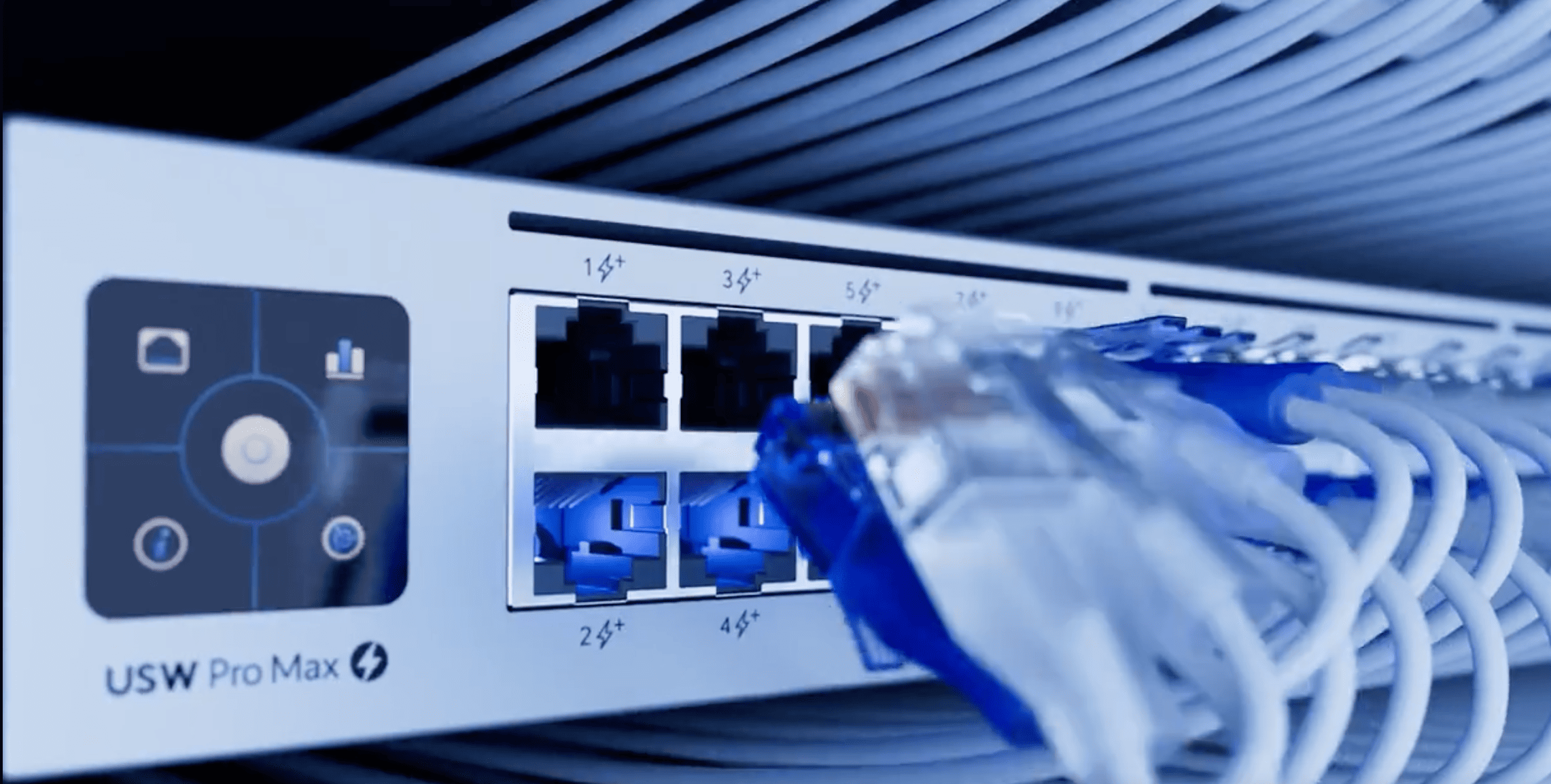
Switching Solutions: Tailoring to Business Needs
Unifi's Range of Switching Options:
- Diverse Portfolio: With options ranging from basic unmanaged switches to advanced managed models, Unifi’s portfolio caters to every business size and type.
- Customization: Tailor your network with switches that align with your specific operational requirements and future growth plans.
Considerations for Selecting Switches:
- The number of Data Drops and Devices: Assess the current and future network load to choose a switch that can efficiently handle your business's data traffic.
- Performance Requirements: Opt for switches that offer higher throughput and advanced features like PoE (Power over Ethernet) for data-intensive operations.
Advanced Wireless Networking
Venturing into the world of Advanced Wireless Networking in 2024 is like stepping into the future. This section focuses on equipping your server room with cutting-edge wireless technology, ensuring your network is functional and forward-thinking. The right wireless setup can elevate your IT infrastructure, offering speed, reliability, and scalability that meet the demands of tomorrow.
Wireless Network Setup in 2024
The Future of Wireless – Unifi U7 Pro Access Points:
- Leading the Charge with Wi-Fi 7: Wi-Fi 7 is not just an upgrade; it's a revolution in wireless technology, and the U7 Pro is at its forefront. It's designed to handle the increasing demands of modern businesses, providing unparalleled wireless performance.
- Benefits of Wi-Fi 7 Technology: Experience reduced latency, higher data rates, and improved network efficiency, essential for today's high-density, high-demand environments.
Maximizing Network Performance:
- 2.5Gbs Uplink Port: This feature is a game-changer, ensuring that your wireless network can fully leverage the capabilities of high-speed internet connections.
- Enhanced Connectivity: The U7 Pro is designed to support a growing number of devices and bandwidth-heavy applications, making it an ideal choice for businesses with high connectivity needs.
Why Choose Unifi U7 Pro:
- Future-Proof: By choosing the U7 Pro, you're preparing for today's needs and future-proofing your network for emerging technologies and demands.
- Seamless Integration: As part of the Unifi ecosystem, the U7 Pro works seamlessly with other Unifi products, creating a harmonious and efficient network environment.
Planning and Designing Your Server Room
Efficiently planning and designing your server room or IT closet is pivotal in setting up a functional and manageable IT infrastructure. This section emphasizes the practicalities of selecting the right location and ensuring orderly setup for easy maintenance and troubleshooting.
Selecting the Right Location
Key Considerations:
- Ventilation: Opt for a room or closet with good ventilation to prevent overheating of equipment.
- Wiring Accessibility: Choose a location that is easily accessible for running cables, essential for connectivity and expansion.
- Space Planning: Ensure enough space for a network rack and future equipment additions.
Efficient Layout and Organization
Network Rack Installation:
- Proper Installation: Install a sturdy network rack that can support the weight and quantity of your equipment.
- Accessibility and Safety: Position the rack for easy access while ensuring it does not obstruct pathways or exits.
Organized and Labeled Setup:
- Neat Cabling: Organize cables neatly using cable management solutions to prevent tangling and damage.
- Labeling: Label cables, ports, and equipment for effortless identification and troubleshooting.
Temperature Control:
- Cooling Solutions: Consider installing additional cooling solutions if natural ventilation is insufficient.
- Temperature Monitoring: Implement monitoring tools to ensure the environment stays within safe operational limits.
This streamlined approach to planning and designing your server room focuses on practicality and efficiency. A well-ventilated, accessible, and neatly organized server room ensures smooth operation and ease of maintenance, forming the backbone of your business's IT infrastructure.
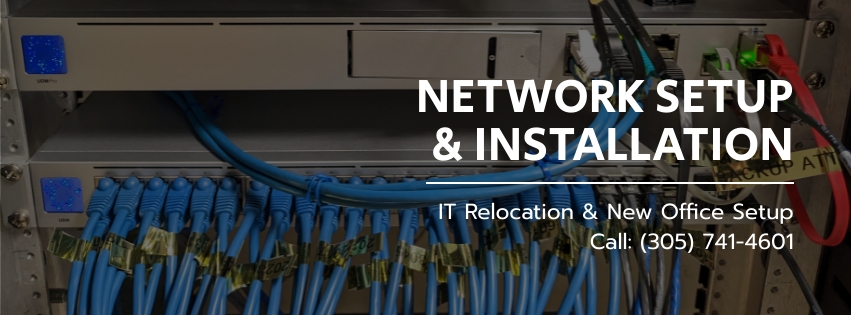
Installation and Setup
Efficient installation and setup of your server room are crucial for creating a reliable and well-functioning IT infrastructure. This section incorporates your specific approach, focusing on the importance of preparation and methodical setup of your networking equipment.
Preparing for Equipment Installation
Finalizing Ethernet Cabling:
- Completion and Organization: Ensure all ethernet cabling is finalized, organized, and clearly labeled before installing any networking equipment. This step is key to a streamlined network setup.
Organized and Systematic Approach:
- Clear Labeling: Label each cable and port to simplify future maintenance and troubleshooting.
- Documentation: Document the layout and connections of your ethernet cabling for easy reference.
Sequential Network Setup
Starting with the Router – Unifi UDM Pro:
- Initial Connection: Begin by connecting the Unifi UDM Pro to your network switch and wireless access points.
- Configuration Steps:
- Configure ISP settings to establish internet connectivity.
- Set up the internal Network LAN, configuring settings for optimal performance and security.
- Establish the wireless network, integrating it with the overall network infrastructure.
Documentation Throughout the Process:
- Record Keeping: Keep detailed records of each step in the setup process, including configurations and settings.
- Organizational Benefit: This documentation will be invaluable for ongoing maintenance, future troubleshooting, and any subsequent network modifications.
This installation and setup approach ensures a smooth and efficient network deployment, laying a strong foundation for your server room's functionality. With everything meticulously organized and documented, you’re setting the stage for easier management and scalability.
Maintenance and Management
Maintaining and managing your server room effectively is crucial for ensuring its long-term efficiency and reliability. This section highlights the key practices and strategies for keeping your server room in top condition.
Regular Maintenance Practices
Scheduled Checkups:
- Routine Hardware Inspections: Regularly inspect all hardware components for signs of wear, damage, or overheating.
- Software and Security Updates: Stay vigilant with software updates, applying the latest patches to ensure security and performance.
Environmental Monitoring:
- Consistent Temperature Checks: Regularly monitor the server room's temperature to prevent overheating.
- Dust Control: Implement a cleaning schedule to keep the server room dust-free, thus ensuring the longevity of the equipment.
Efficient Management Strategies
Remote Monitoring Tools:
- Implementation: Utilize remote monitoring software to keep a real-time watch on network performance and security.
- Proactive Alerts: Set up alerts for any critical changes in performance or environmental conditions.
Documentation and Record Keeping:
- Detailed Records: Maintain comprehensive records of all configurations, updates, and maintenance activities.
- Staff Training and Awareness: Educate your IT staff about the server room setup, ensuring everyone is aware of the procedures and emergency protocols.
Future-Proofing Your Server Room
As technology continuously evolves, future-proofing your server room is essential. This section provides insights on how to keep your server room updated and prepared for future advancements.
Adapting to Emerging Technologies
Stay Informed: Keep abreast of the latest technological trends and advancements in server and network technology.
Scalable Infrastructure: Design your server room with scalability in mind, allowing for easy upgrades and integration of new technologies.
Strategic Upgrades
Assess and Plan: Regularly evaluate your server room's performance and plan for upgrades in a strategic manner, considering both current needs and future growth.
Invest in Modular Systems: Opt for modular systems and components that can be easily upgraded or replaced as technology advances.
Conclusion
In this comprehensive guide, we've walked you through the essential steps of setting up, maintaining, and future-proofing your server room in 2024. By following these guidelines, you will establish an efficient and reliable IT infrastructure and ensure that it remains resilient and adaptable to the changing technological landscape.
FAQ
What are the key components of a server room?
A typical server room includes servers, network switches and routers, cooling systems, power backup solutions (like UPS), cable management systems, and security measures. It should also have environmental monitoring tools to keep track of temperature and humidity levels.
How do I choose the right location for my server room?
Select a location that is easily accessible for maintenance but secure from unauthorized access. It should be well-ventilated, free from environmental hazards (like flooding or excessive humidity), and spacious enough to accommodate future expansions.
What is the importance of cable management in a server room?
Effective cable management helps in maintaining an organized and safe server room. It simplifies troubleshooting, reduces the risk of accidental disconnections, and aids in efficient cooling by preventing airflow blockages.
How can I ensure my server room is energy-efficient?
Use energy-efficient equipment, implement advanced cooling solutions, and consider using virtualization to reduce the number of physical servers. Regular maintenance and monitoring can also help in optimizing energy usage.
What are the best practices for server room security?
Implement physical security measures like access control systems and surveillance cameras. On the network level, use firewalls, data encryption, and regular security audits to protect against cyber threats.
How often should I perform maintenance checks in my server room?
Conduct routine maintenance checks at least quarterly. However, continuous monitoring of critical systems like cooling and power should be done to ensure they are functioning optimally at all times.
How can I future-proof my server room?
Invest in scalable and modular equipment, stay updated with the latest technological advancements, and design your server room with flexibility for easy upgrades and modifications.
What is the role of disaster recovery in server room management?
A well-planned disaster recovery strategy ensures business continuity in case of emergencies. This includes regular data backups, redundant systems, and clear recovery procedures to minimize downtime and data loss.
Can I set up a server room in a small space?
Yes, with careful planning and the use of compact and efficient equipment, you can set up an effective server room in a small space. Focus on maximizing the use of vertical space and consider using cloud services to reduce on-premises hardware.
How important is cooling in a server room?
Adequate cooling is crucial to prevent overheating, which can lead to hardware malfunctions and reduced lifespan of equipment. Ensure your cooling system is proportional to your server room's size and heat output.
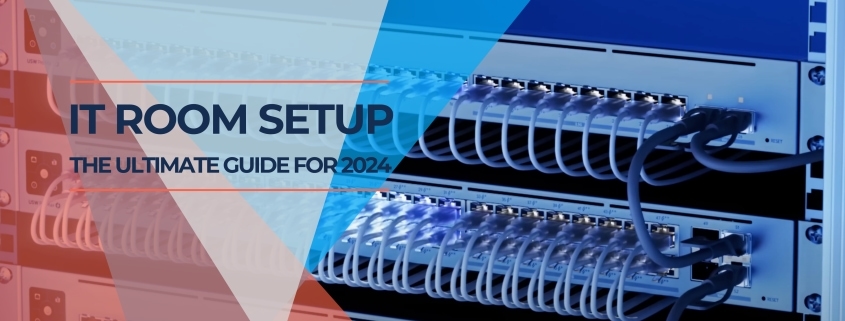
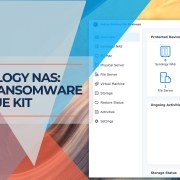


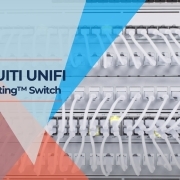
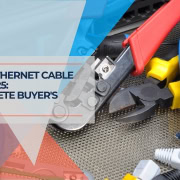

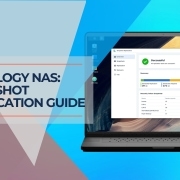



Leave a Reply
Want to join the discussion?Feel free to contribute!